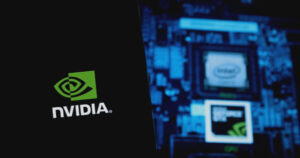Welcome to Extreme Investor Network!
Are you ready to dive into the world of cutting-edge technology and innovation in the realm of Cybersecurity? Today, we are thrilled to bring you the latest groundbreaking update from NVIDIA, a prominent player in the technology industry.
NVIDIA Introduces Morpheus: Revolutionizing Security Operations Centers with AI-Powered Alert Triage
Security Operations Centers (SOCs) face a constant barrage of alerts, making it a daunting task for analysts to separate genuine threats from false positives. Enter NVIDIA’s revolutionary AI framework, Morpheus, designed to streamline alert triage and enhance security measures in SOCs, as reported by NVIDIA Technical Blog.
NVIDIA Morpheus and Digital Fingerprinting
With a focus on high-velocity data streams, Morpheus harnesses the power of GPU acceleration for cybersecurity. One of its key features is the digital fingerprinting AI workflow, which identifies anomalies by analyzing and learning normal behavior profiles. Any deviation triggers alerts, quantified by z-scores indicating the severity of the anomaly.
Integrating Generative AI for Enhanced Insights
Going beyond traditional AI-based cyber-anomaly detection systems, NVIDIA incorporates generative AI to transform complex tabular data into easily interpretable reports. Using the Llama 3.1 model, scattered insights are consolidated into user-specific reports, enabling SOC analysts to prioritize and respond to alerts more effectively.
By integrating AI, manual triage time is significantly reduced, allowing for quicker response to alerts. The addition of a security co-pilot enhances the efficiency further by using verbal queries to interact with analysts, providing spoken responses and actionable insights.
Co-Pilot Systems and NIM Microservices
The co-pilot system utilizes NVIDIA NIM microservices like Parakeet-CTC-1.1B for speech recognition and FastPitch-HifiGAN for text-to-speech conversion. These microservices streamline the interaction between analysts and AI, creating a seamless workflow and empowering analysts to perform iterative reasoning through retrieval-augmented generation (RAG).
Real-World Application and Efficiency
Through practical scenarios such as identifying unusual network traffic patterns, the co-pilot system showcases its automation capabilities, allowing analysts to focus on complex threats. NVIDIA’s approach aims to increase productivity and build trust by providing control over the AI’s reasoning process, complemented by facial expression interaction through NVIDIA ACE Audio2Face.
Future Developments and Integration
NVIDIA’s future plans for Morpheus include facilitating easier integration with various data sources and transitioning to live event-driven data ingestion. By collaborating with internal threat operations teams, NVIDIA aims to refine and adapt these tools for broader applications, positioning Morpheus as a versatile solution adaptable to multiple industries beyond cybersecurity.
For a more in-depth understanding of NVIDIA Morpheus and its transformative impact on SOCs, visit the NVIDIA Technical Blog.
Stay tuned to Extreme Investor Network for more exclusive insights and updates on the latest trends in technology and cryptocurrency!

